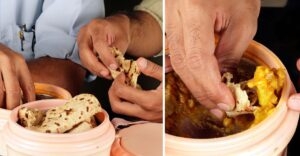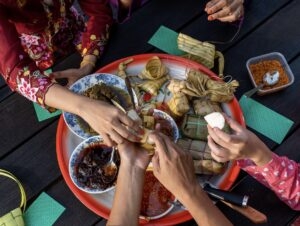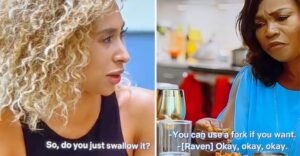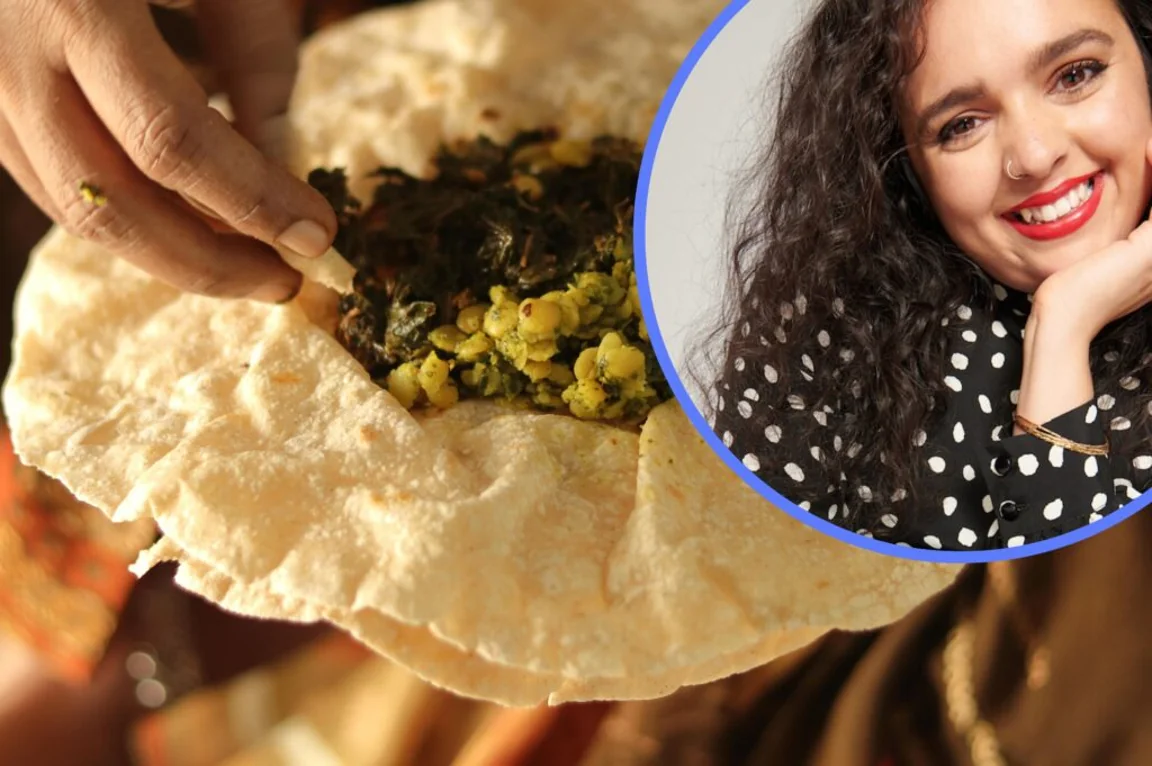features
‘Eating with your hands isn’t a TikTok trend, it’s my culture’
04 Nov 2022
4m
When you sit down to eat, what do you reach for? A knife and fork? A spoon? Or do you use your fingers?
Lately, TikTok users have been laying down their cutlery to ‘try out’ the latter, as if it’s a trend for their online amusement. Dubbed ‘digit dining,’ the so-called challenge invites people to tuck into dishes like spaghetti bolognese and mushroom tagliatelle without the aid of utensils.
But as someone of mixed-Punjabi and white British heritage, it’s safe to say that watching these videos brings me no entertainment.

Isabella has eaten with her hands her whole life (Credit: Rosaline Shahnavaz)
Restaurant booking platform TheFork racked up hundreds of views by tasking one influencer with trying out their “Hands Glee” experience – essentially eating with your hands at one of their nineteen partner restaurants to get 50 percent off your bill.
You could call it clever marketing, sure, but for someone like me, whose culture has always eaten with our hands, the resulting press headlines like “TikToker tries weird food trend” and “Are you ‘forking’ kidding me?” left a sour taste in my mouth.
Not only is it uncomfortable to see yet another brand try to profit off our culinary tradition and claim it as their own invention, people calling it ‘weird,’ ‘madness,’ ‘bizarre’ and ‘impolite’ is a throwback to racist bullying experienced by people of colour.
I’ve been eating dahls and sabjis with my fingers ever since I was born. At my granny’s house, steaming piles of rice and bowls of turmeric-yellow mutter paneer were served with rotis, cooked over the flames of the hob or fried fluffy bhaturas to scoop up the food – but she would forgo the flatbreads altogether.
Nothing beats lightly burning myself on stuffed aloo paranthas for breakfast, wiping greasy fingers on napkins as granny offers to fry ‘just one more’ for me, or a ball of hot prashad dropping into my palms at the gurdwara, which I eat quickly, rubbing the oil into my hands.
Considering eating with your hands is something many Asian, Middle Eastern and African cultures have done for centuries, seeing TikTokers ‘trying it out’ as some sort of new craze is jarring, showing no cultural or contextual understanding of the meaning behind the practice.

Eating with hands is common in Isabella’s Punjabi culture (Credit: Alamy)
Kushie, 28, a freelance journalist from London, is another who has felt frustration. She tells me that the ‘eating with your hands trend’ annoys her because it’s such a huge part of her Bangladeshi culture.
“Growing up, whenever I ate with my hands around people not within my culture I’d get weird looks,” she says.
“I was made to feel like what I was doing was dirty or barbaric. To see white people doing it as a trend on TikTik and it suddenly becoming palatable is frustrating. Communities of colour face so much prejudice for intrinsic parts of our culture.”
For Simi, a 25-year-old media planner from Leicester, the reason for eating with her hands is religious, as well as cultural.
“As a Muslim, the Prophet (PBUH) taught us there are numerous benefits of eating with your hands – your right hand specifically – and to link your fingers upon finishing your meal,” she says.
“You are more mindful of what you’re eating and feel more connected to the food, which increases enjoyment and helps you pay attention to how much you’re consuming. The food just tastes better, too.”

Eating with your hands is common in the Malay culture, too (Credit: Alamy)
Meanwhile, beauty writer Medina, 30, from London, says that “decorum and politeness” is a big part of her Malay heritage, “so, eating with our hand is never ‘messy’ like some people think”.
“Curries, rice, vegetables and anything fried is eaten with our hand. I say hand, singular, because it should always be your right hand,” she explains.
“It doesn’t bother me that it’s a ‘trend’ on social media, as long as they acknowledge where the practice comes from.
“What does bother me though is when people immediately dismiss it as ‘weird’, ‘exotic’ or ‘unhygienic.’”
Eating with your hands is also not a ‘trend’ to 44-year-old Faustina. The founder of women’s forum, Divas Of Colour. She tells me she’s always eaten fufu and soup without cutlery.
“I’m Igbo, Nigerian, and eating with your hands is a centuries old practice,” she says.
“Given the condiments used in making Igbo soup, using your hands keeps you safe from swallowing things like fish bones, as well as helping you measure how much you eat and guiding the food into your mouth.”
Hands up, who noticed Nigerian SK on Netflix’s Love Is Blind telling his hesitant wife, Raven, that he eats food with his hands?

Love is Blind showed SK’s family eating Nigerian food with their hands (Credit: Netflix)
According to Professor Charles Spence, experimental psychologist at the University of Oxford, Faustina’s not wrong.
“Eating with your hands is scientifically proven to improve texture and the flavour of food, as well as a whole host of health benefits,” he says.
He adds: “Eating with our hands helps to make us more mindful about what we are eating and heighten our dining experience, rather than just thoughtlessly using cutlery like we always do.”
Sounds pretty appealing, right? So, is it all that bad when white people ‘try’ something that people of colour have done for years? Not when it’s done respectfully and credit or context is given – or at least acknowledged.
But if you’re going to ignorantly call eating with your hands dirty and weird, maybe it’s best to just pick up the fork.



.jpg_dU0O4c?tr=w-2560,f-webp,q-70)